Shapes. Precisely. Milled.
CNC
milling
When precision and flexibility are just as important as time- and cost-conscious production, then we recommend the strengths of a CNC milling machine for the manufacturing of parts and components.
The processing using CNC (computerized numerical control) equipment enables, when compared with traditional manufacturing techniques, the highest level of precision, efficiency, flexibility and consistency. These factors are just as important as a cost-efficient manufacturing process – no matter if we are dealing with prototypes, small batches, or large-scale production runs. A CNC milling machine, with its wide variety of tools, achieves unequaled attention to detail and operates in the smallest of tolerances.
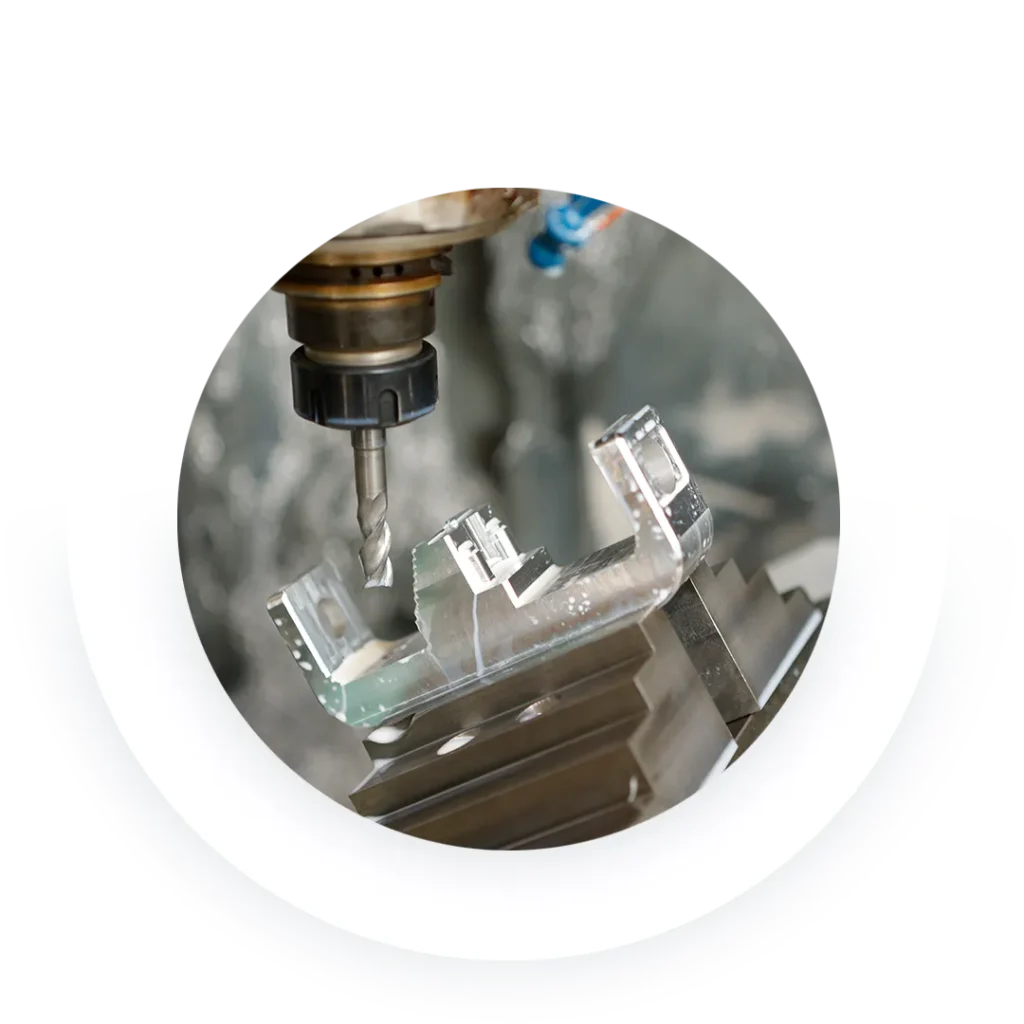
Contact us if you would like to know whether we can make your part or component using the CNC-milling machine.
CNC milling with Power and Speed
The fleet of GDFT’s CNC-milling equipment consists of 3- or 5-axis models made by the manufacturers DMG MORI, EMCO and HURCO. Our cutting machine operators utilize their yearlong experience to achieve the shortest possible turnaround times for any order. They will also select the best suitable equipment from our high-performance CNC milling machine fleet for the job.
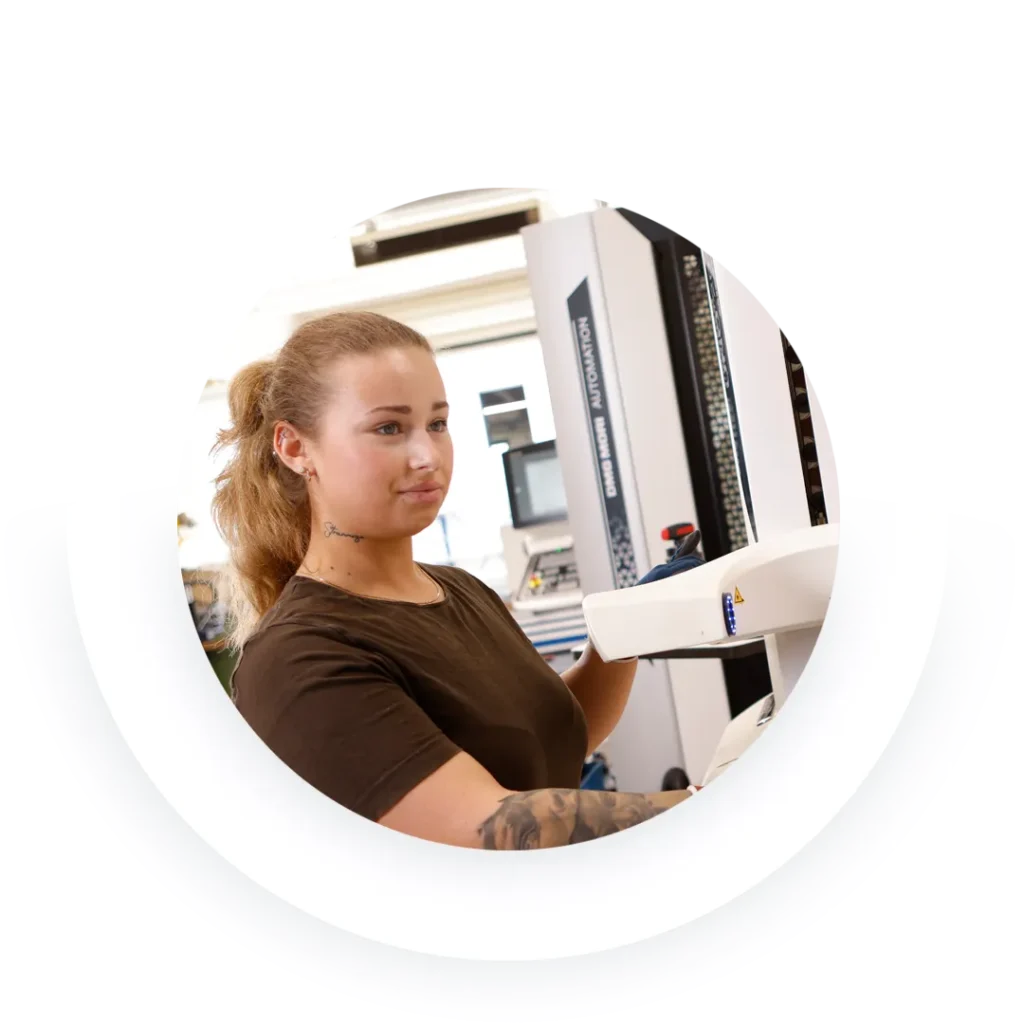
CNC Milling nowadays
The introduction of computer-controlled technology enabled a much more precise utilization of milling tools. Modern equipment features various tool magazines with fast changing tools for further processing steps represent only one characteristic of technological advancements in machine milling. Modern CNC machines also have shorter start- and positioning cycles and boast faster acceleration for speedier processing of material.
Two of our CNC milling machines have automation features, such as an automated pallet changer. This enables automated serial production, as well as random production (chaotic manufacturing) of up to 10 different objects – which allows for fast and flexible reaction to customer demands. Furthermore, this automation reduces the setup and run times and increases productivity.
How does the manufacturing process at GDFT work when using CNC milling equipment?
Facts about CNC milling
Equipment brands and manufacturers: DMG Mori, EMCO and HURCO
3-axis CNC milling machines
Maximum travel x-axis: 800 mm
Maximum travel y-axis: 560 mm
Maximum travel z-axis: 510 mm
Maximum workpiece weight: 800 kg
5-axis CNC-milling machines
Maximum travel x-axis: 400 mm
Maximum travel y-axis: 400 mm
Maximum travel z-axis: 375 mm
Maximum workpiece weight: 250 kg
We use: CAM programming for milling, 3D-darw preferred in IGES-, DYF- or STEP-formats. Other data formats are available, upon customer request.
Programming and job preparation
Based on your CAD model, we plot the corresponding movements for the specific tools on our CAM software to the smallest detail.
Manufacturing
The parts and components are produced by our CNC milling equipment in the desired quantities.
Finishing (optional)
Manufactured parts and components can be further finished using different techniques by our specialist partners. The process of finishing increases durability as well as aesthetic appeal.
Module assembly (optional)
In case a CNC milled part is one of many components of a final product, we also provide module assembly.
Quality assurance
Our strict inspection protocols complement the measuring systems which are integrated in our CNC-milling equipment.
Shipping and Logistics
The final products are being packaged and shipped to a warehouse or another customer-selected destination. Depending on order size and destination – we can offer multiple flexible logistics solutions.
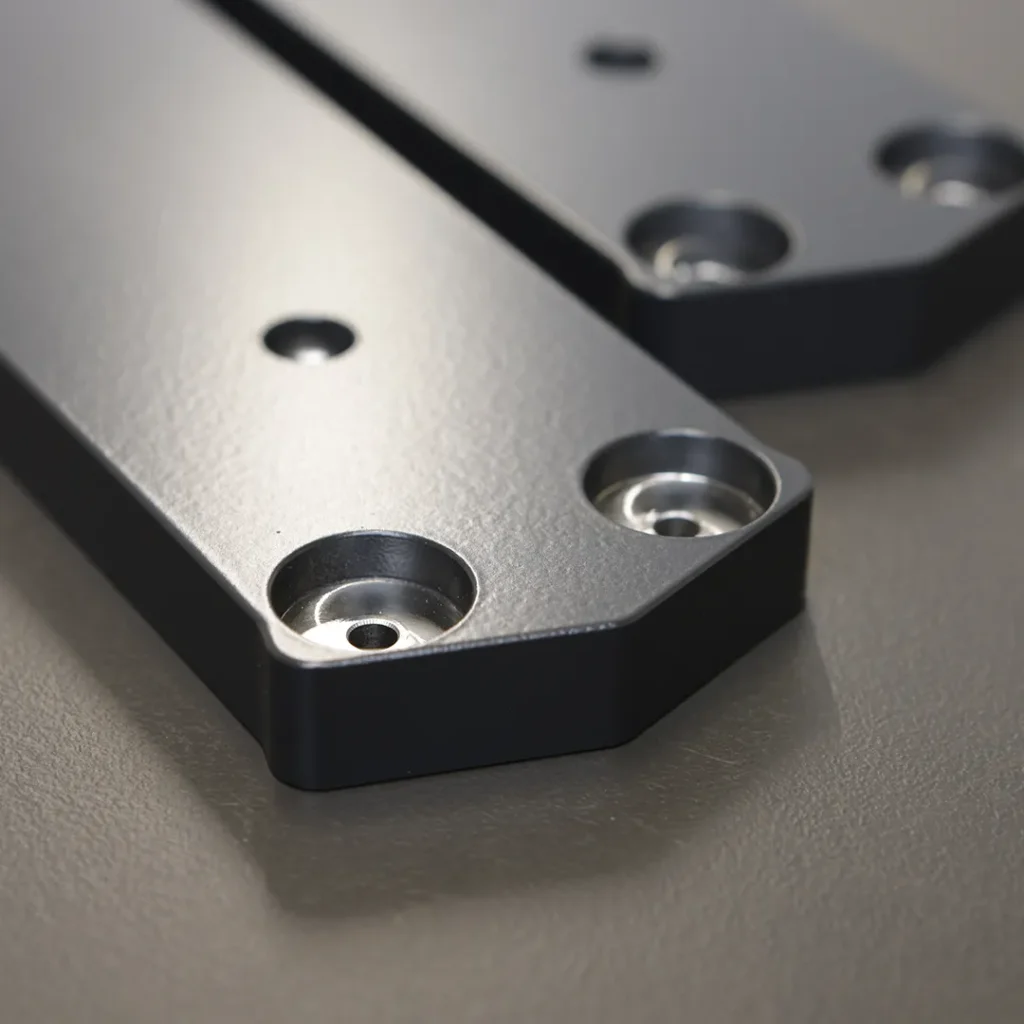
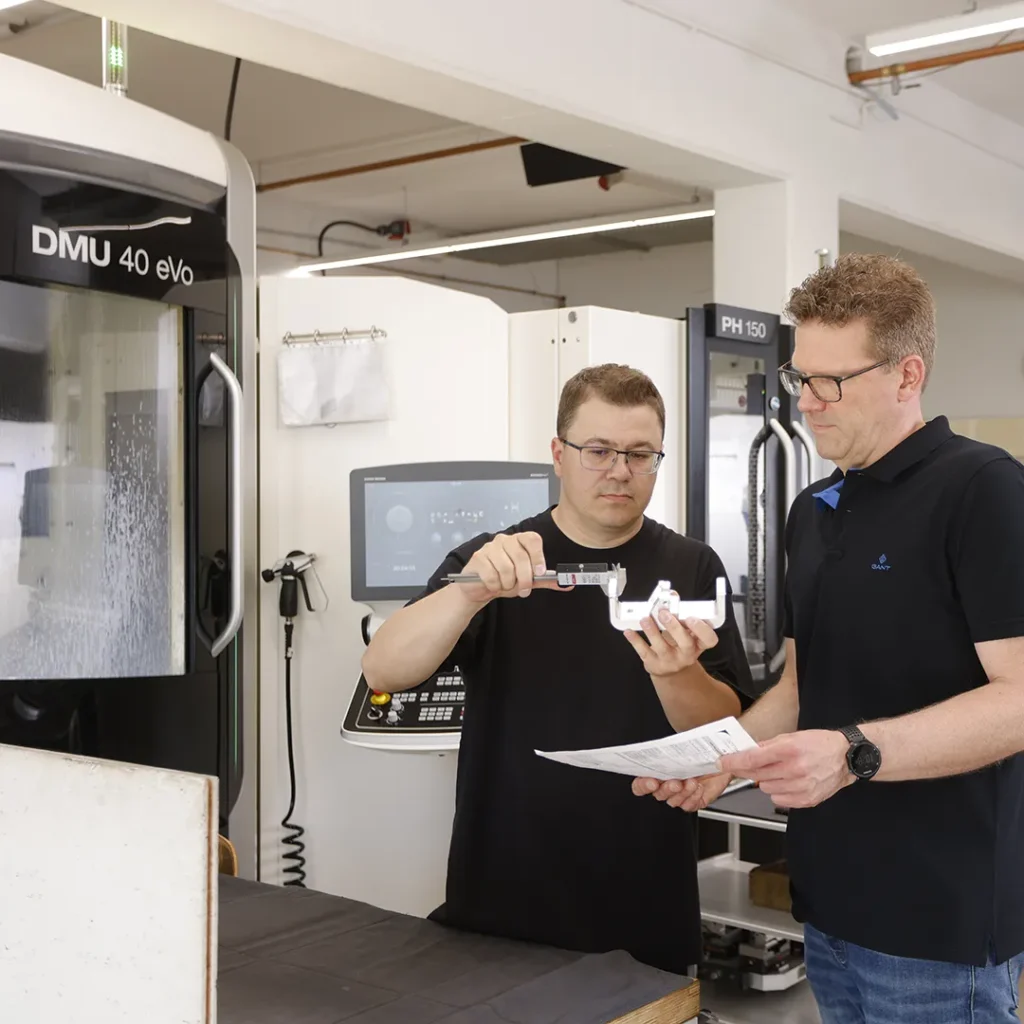
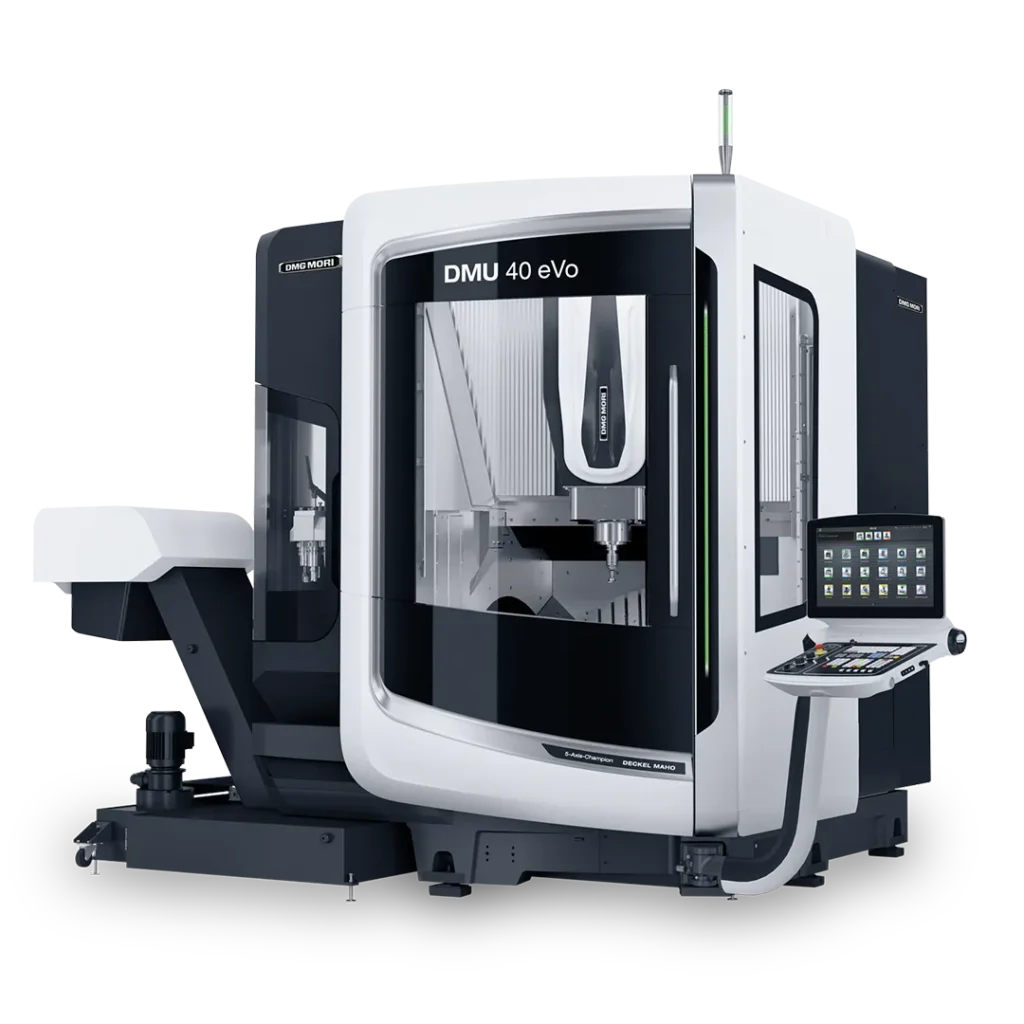
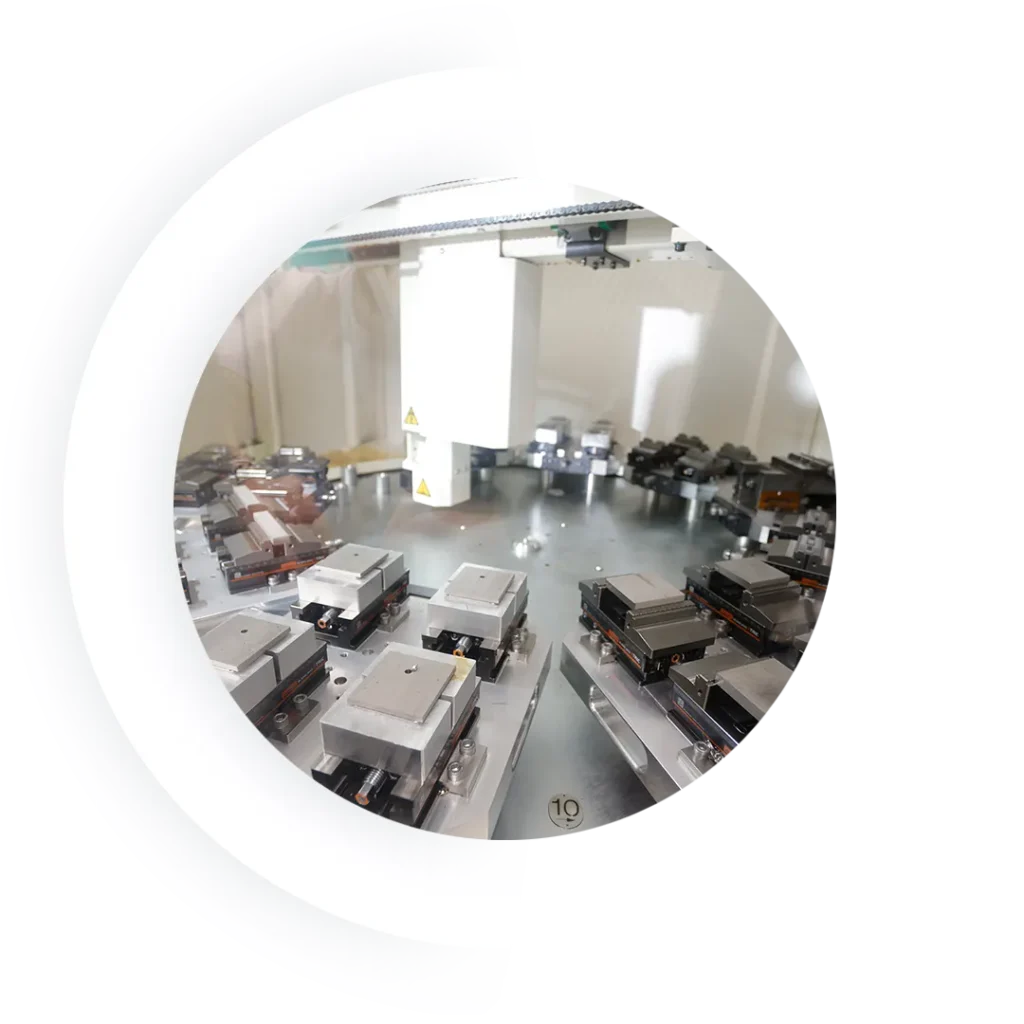
A moving history
The process of milling has evolved over the centuries from a simple manual process to highly precise and automated processes. The beginnings of milling can be traced back to ancient times. In Egypt, people were using primitive tools to shape wooden and stone materials. Earlier civilizations, such as the Romans, Greeks and Chinese knew about and used the milling process. With the Industrial Revolution came mechanized milling machines, driven by steam- or waterpower. These machines enabled the processing of metal and thus contributed largely to efforts in mechanical engineering and industrial manufacturing. The introduction of CNC technology revolutionized the milling process in the 20th century.
DMG MORI DMU 40 eVo
Our 5-axis universal processing center

The many advantages of using a CNC milling machine
- Automated and program-controlled processing
- High precision within small tolerances
- Wide variety or processing options through various tools
- Repeatability and consistency in quality
- Fast processing times through pallet automation
- Wide variety of possible materials
- Reduction of labor cost as well as less process waste or re-work
- Complex shapes and geometries possible
- Single part all the way through large serial production – scalable and flexible
- High process control through strict quality assurance programs
Is CNC-milling the right process
for your project?
